-
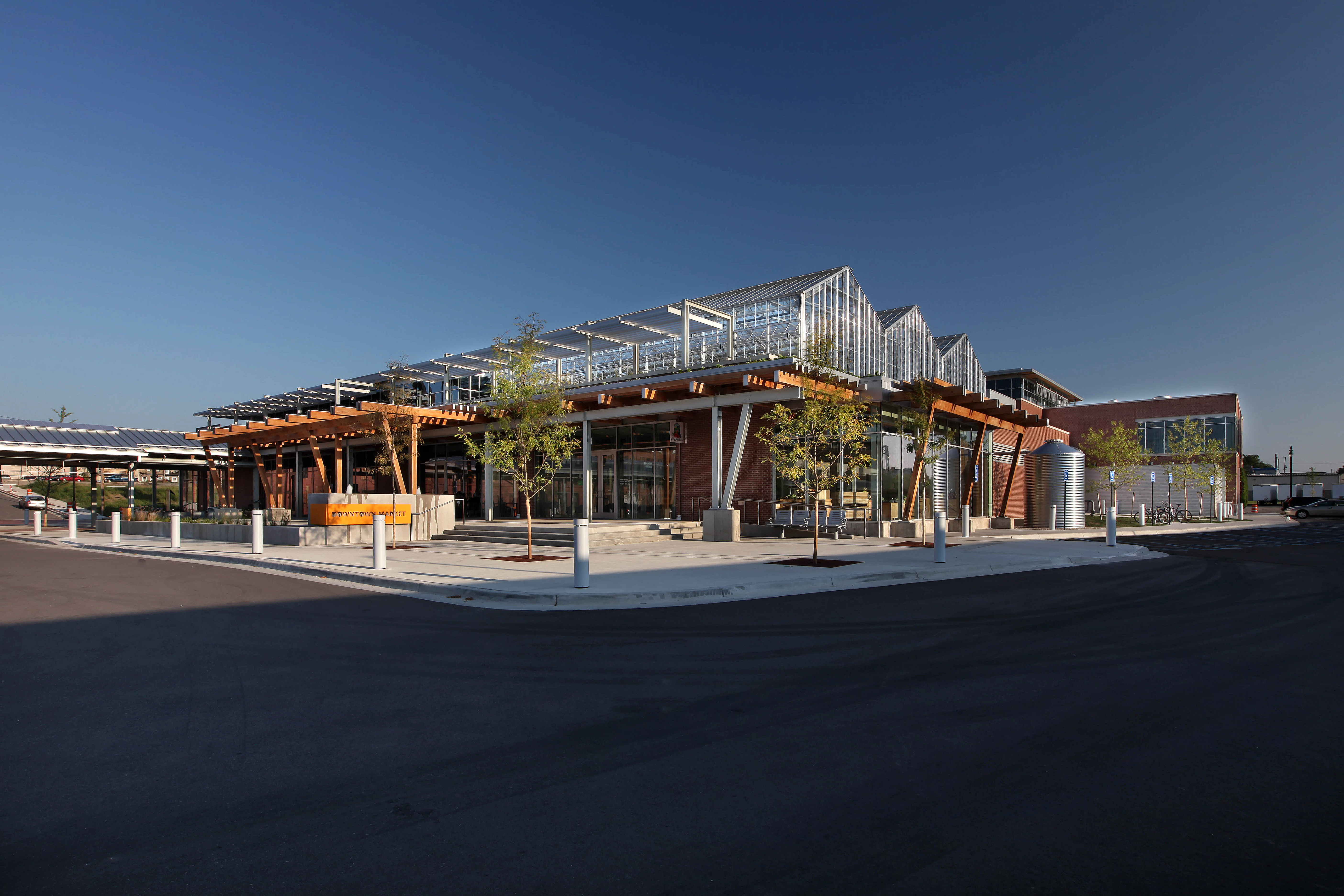 Grand Rapids Downtown Market
Grand Rapids Downtown Market 2015 Rudy Bruner Award for Urban Excellence - Silver Medal
Michigan’s Grand Rapids Downtown Market is a year-round farmers market that brings local food production, distribution, marketing, and education to the community. The first LEED Gold certified public market in the country, the market features 24 indoor vendors and a seasonal 52-stall outdoor shed featuring locally grown, produced, and prepared foods. Upper floors house educational classrooms, a commercial kitchen incubator, a rooftop greenhouse, offices and meeting rooms, and event spaces. The ground floor also includes two full-service restaurants.
The market is located just south of the downtown business district in Heartside, one of the area’s most economically challenged neighborhoods. Vendors accept Supplemental Nutrition Assistance Program (SNAP) food stamps, and the market partners with local nonprofits to provide educational scholarships to low-income residents along with complimentary transit passes and “Produce Bucks” that can be used at the market’s grocery store. The Heartside Gleaning Initiative collects excess fresh produce from market vendors for distribution to local food pantries.
The Downtown Market celebrates the local food system by linking the Grand Rapids community with many of the 12,220 farms in 11 surrounding counties and attracts a diversity of customers and additional investment to the southern edge of downtown. Educational programming is at the core of the market’s mission, and classes on cooking and nutrition are offered in the teaching kitchen, which features adjustable-height countertops that can be lowered for children. An incubator kitchen program assists start-up entrepreneurs with the development, production, and marketing of food products using a shared commercial kitchen.
-
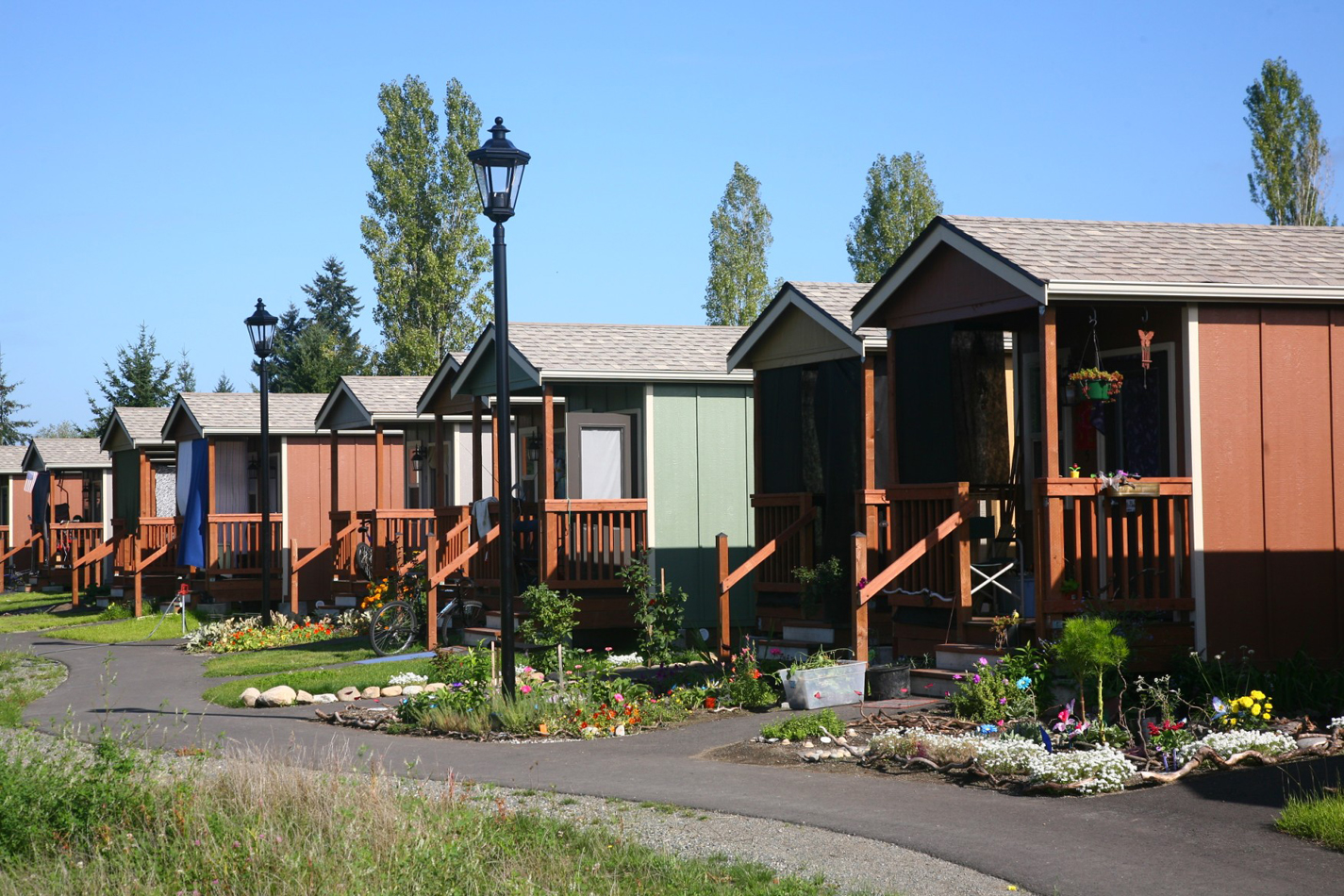 Quixote Village
Quixote Village 2015 Rudy Bruner Award for Urban Excellence - Silver Medal
Quixote Village in Olympia, Washington, is a low-cost, sustainable community composed of 30 tiny houses occupied by formerly homeless residents. Set on two acres of land donated by the county, the cottages face a central open space and retention ponds, and a 2,640-square-foot community building houses a communal kitchen and gathering room, showers and laundry facilities, staff offices, and a meeting room. Each 144-square-foot house provides just enough room for a single bed, a desk and chair, a half bath, and a closet. Front porches encourage interaction and contribute to the sense of community.
The village emerged from a self-governing tent community that formed in 2007 as a protested against an anti-homeless city ordinance. After the City of Olympia threatened to remove the camp, a local church offered to host the community on its grounds. Over the next seven years, Camp Quixote, as the tent community was called, moved from site to site among local churches with the help of Panza, a nonprofit formed to support Camp Quixote and, eventually, help develop a permanent home for its residents. The “tiny house” idea emerged from a series of workshops with camp residents and Panza members.
Although Panza serves as the legal owner and landlord, residents of Quixote Village have responsibilities and continue to play a significant role in governing the community. A full-time program and facilities manager and a resident advocate provide support for the community including property management, local transportation, and programmed activities, as well as individualized counseling that connects residents with education and employment opportunities, local mental and physical health services, and state and federal government aid.
-
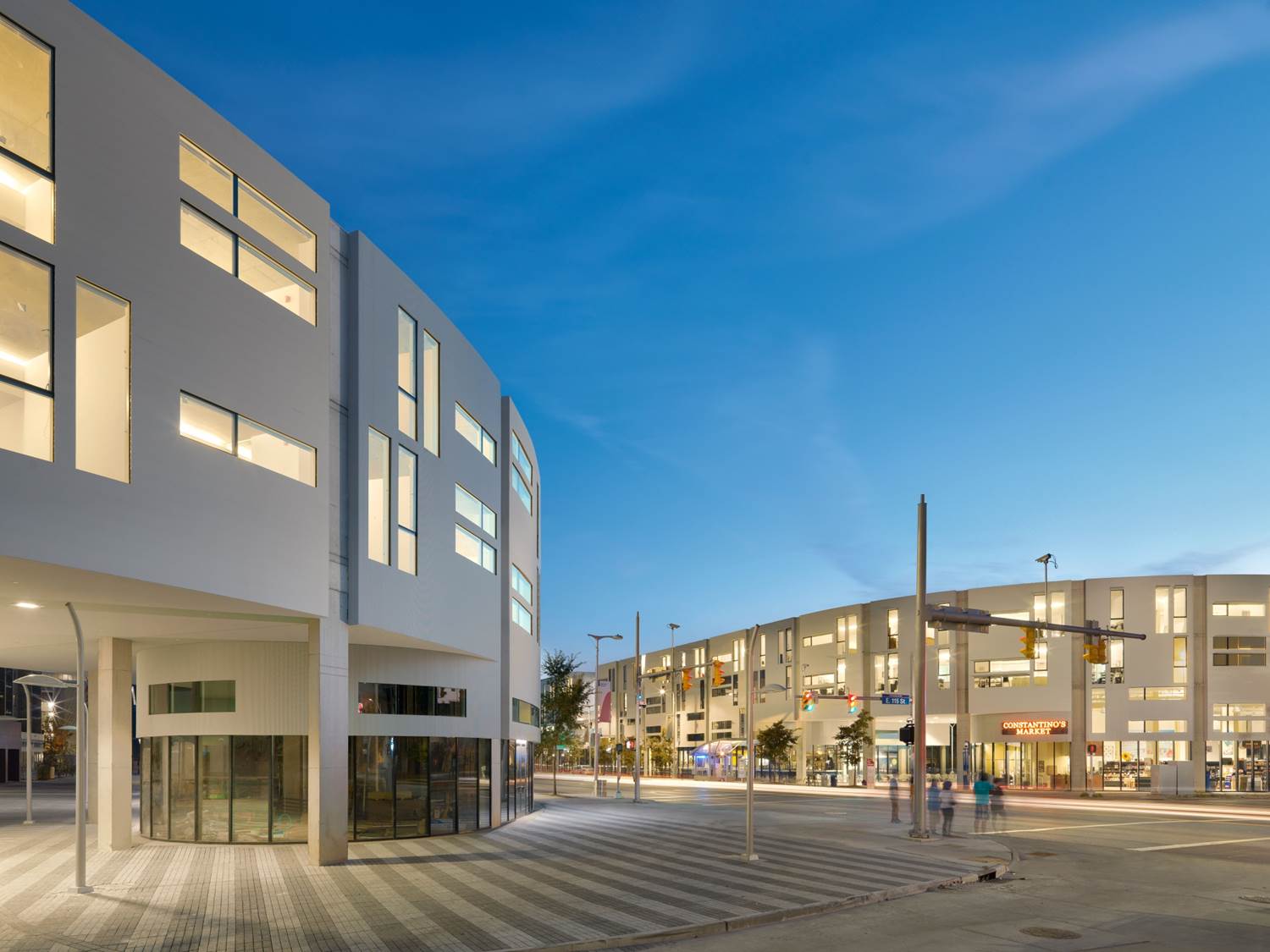 Uptown District
Uptown District 2015 Rudy Bruner Award for Urban Excellence - Silver Medal
Uptown District in Cleveland revitalized 8.2 acres of formerly vacant land into a mixed-use space and gateway to cultural, educational, and healthcare institutions. It is a sustainable, transit-oriented development located at a convergence of neighborhoods four miles east of downtown and a truly collaborative effort that has transformed two blocks of Euclid Avenue. Costing more than $200 million and consisting of over 223,500 square feet of new development, the district turned a “no-man’s-land” into a destination.
Uptown District is bookended by the Museum of Contemporary Art, housed in a new and iconic building, and the Cleveland Institute of Art, which consolidated and expanded its campus. In between, the “Wall” forms the heart of the district and features outdoor gathering spaces, retail shops and restaurants, and student and market-rate housing.
Envisioned as an arts and entertainment district, Uptown District was designed to create “connective tissue” linking Cleveland’s educational and cultural district with downtown and adjoining communities. Mid-block passageways and an internal “alley” provide visual and pedestrian connections between Euclid Avenue and adjoining buildings, plazas, and parking. The downtown and neighborhood linkage was improved through new rail stations both south of and within Uptown as well as by the popular HealthLine bus system that connects Uptown District with downtown and East Cleveland.
Uptown District is a continuing focus of the Cleveland Foundation’s Greater University Circle Initiative, a public-private partnership between leading anchor institutions, philanthropic organizations, financial institutions, community groups, and the City of Cleveland. The development highlights the role of anchor institutions—including Case Western University, whose land banking strategy laid the foundation for the project—in catalyzing and leading community change.
-
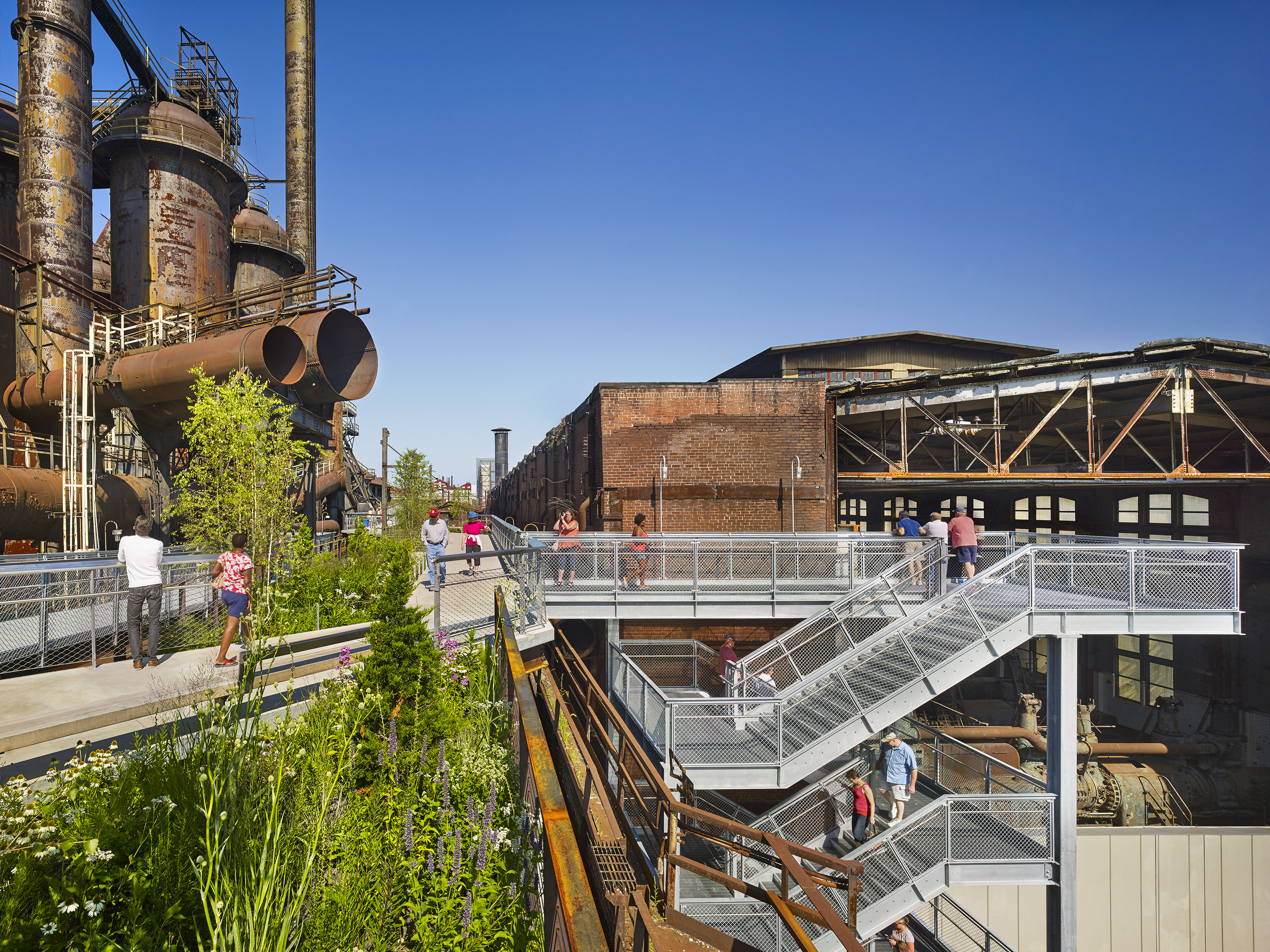 SteelStacks Arts and Cultural Campus
SteelStacks Arts and Cultural Campus 2017 Rudy Bruner Award for Urban Excellence - Gold Medal
Transformation of a former steel plant into a mixed-use cultural and entertainment district.
SteelStacks Arts and Cultural Campus repurposed an abandoned industrial site in Bethlehem, Pennsylvania, to create an arts and entertainment district. Embracing the city’s past, SteelStacks integrates historic steel-making structures – including five 20-story-high blast furnaces – with new construction to tell the story of steel-making in America while stimulating an economy devastated by the closure of the 1,800-acre Bethlehem Steel Corporation in 1995.
Built on a 9.5-acre former brownfield, SteelStacks includes parks and plazas, an outdoor performing arts pavilion, a visitor center with a theater and community space in the restored historic Stock House building, new buildings for its nonprofit partners ArtsQuest and PBS39, a festival center, and an elevated trestle that gives the 1.5 million visitors each year an up-close look at the plant and its iconic blast furnaces. Its design focuses on connection, linking visitors to the city’s past, connecting the various activities and amenities within the campus, and merging the campus with the South Side neighborhood and the adjacent Sands Casino Resort.
-
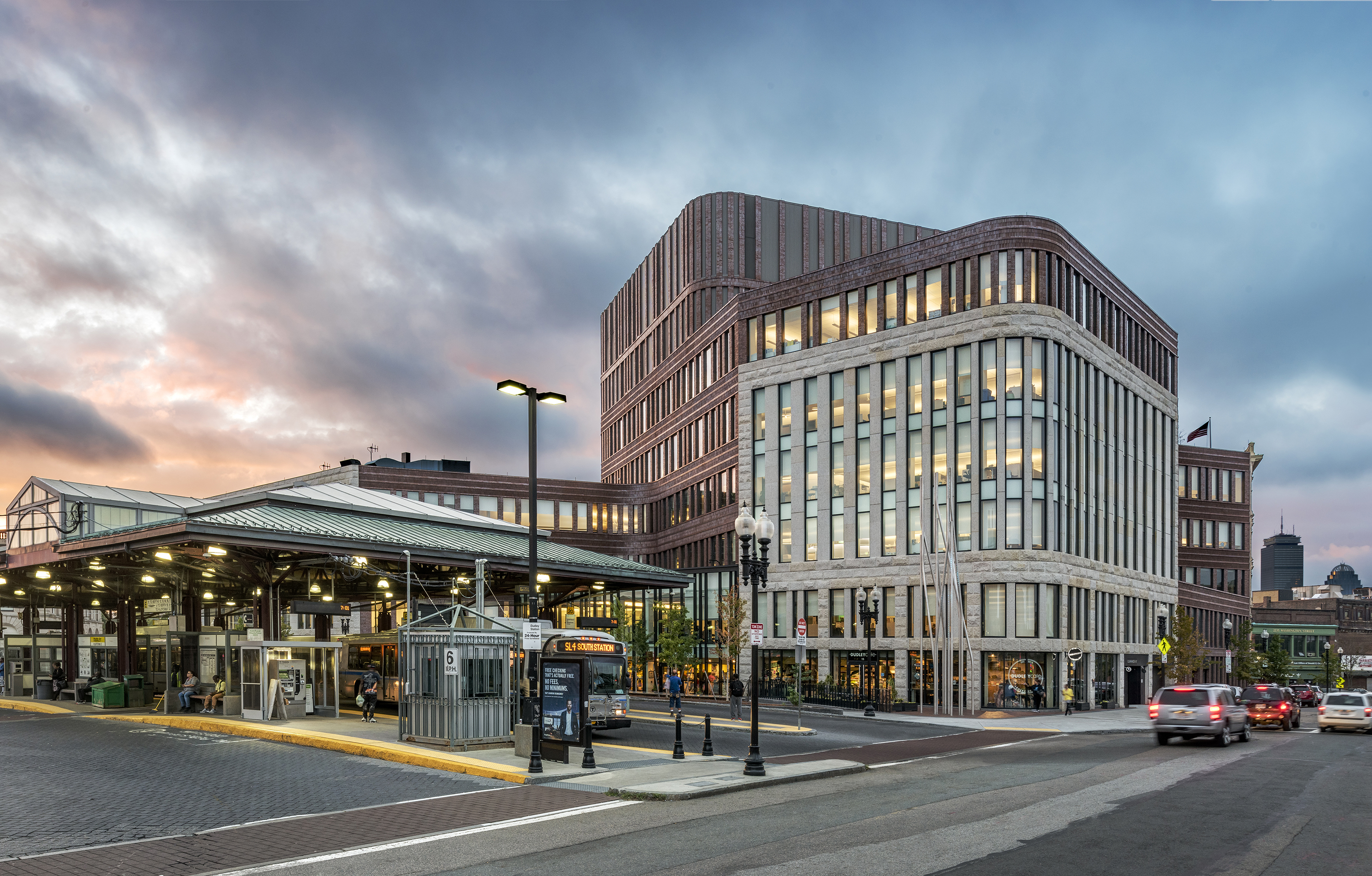 Bruce C. Bolling Municipal Building
Bruce C. Bolling Municipal Building 2017 Rudy Bruner Award for Urban Excellence - Silver Medal
The Bruce C. Bolling Municipal Building in Boston, Massachusetts is a mixed-use facility integrating public school offices, retail, transit, and the community. Centrally located in Roxbury’s Dudley Square adjacent to a regional transit hub, it was created by the city of Boston to stimulate community development and investment.
The 215,000 square foot complex incorporates the restoration of three historic facades, including the landmark Ferdinand building, coupled with new construction and capped with a green roof. The interior includes a light filled-atrium, offices, community meeting space, and first floor retail.
The anchor tenant is the newly consolidated Boston Public Schools headquarters. Ground floor restaurants and shops serve building tenants and the surrounding neighborhood. Funding for the $124 million public private development included New Market Tax Credit financing.
-
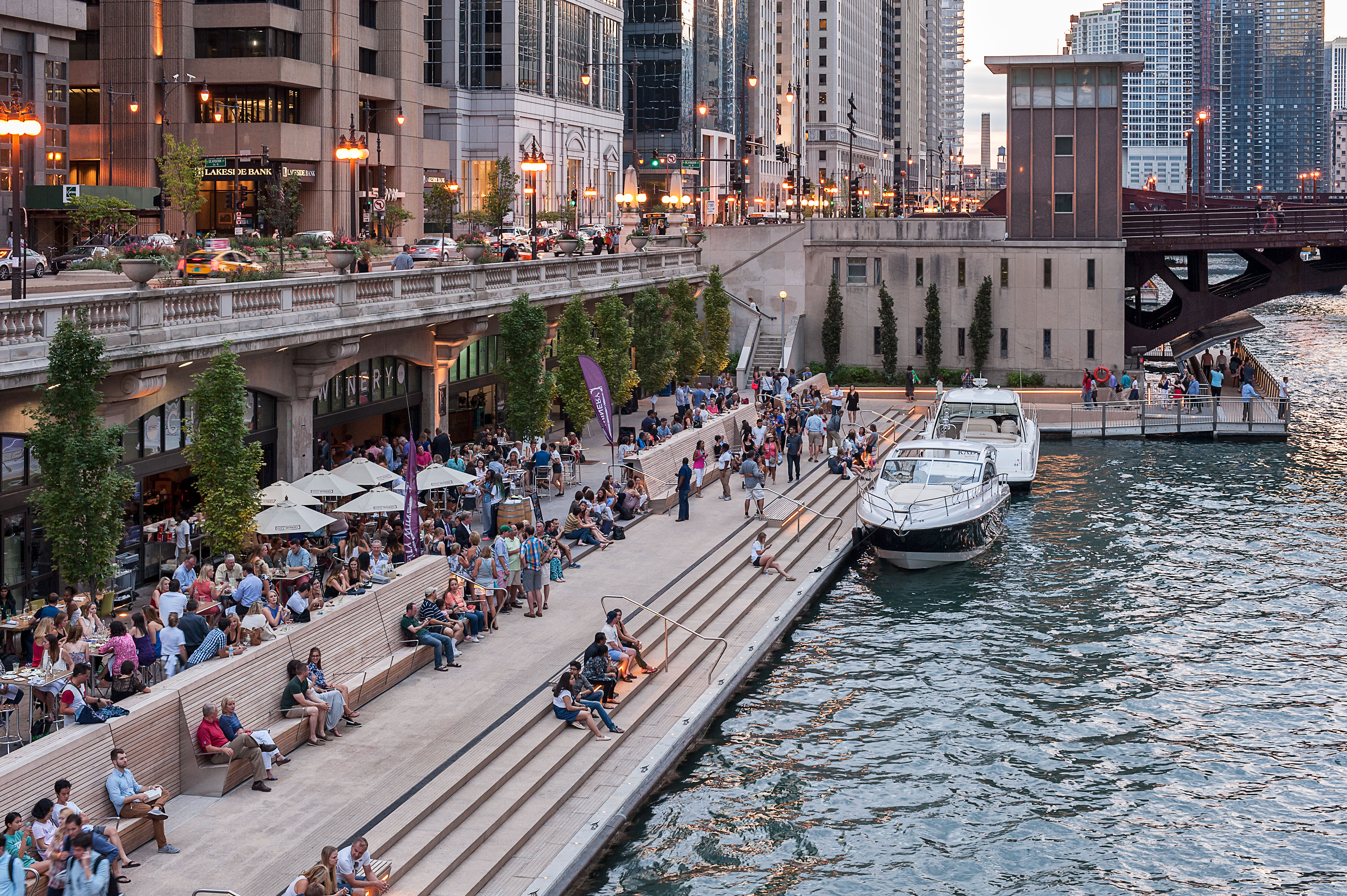 Chicago Riverwalk
Chicago Riverwalk 2017 Rudy Bruner Award for Urban Excellence - Silver Medal
Phases 2 & 3 of Chicago’s Riverwalk transformed underutilized waterfront infrastructure into five distinct “rooms” connecting riverside amenities to the city. The project faced the technical challenge of lowering the Riverwalk to the river’s edge to enable boating and water recreation while creating a sustainable, flood-resilient landscape.
While design elements and materials provide a strong sense of continuity along the path, each of the five waterfront blocks offers a unique shape and programmatic approach to exploring the relationship between the river and the city. New waterfront amenities include art installations and events, educational programs and interpretive signage, restaurants and outdoor seating, kayak rentals, and piers and floating wetland gardens for interactive learning about the river’s ecology. The $95 million project covers 3.5 acres and was completed in October 2016.
-
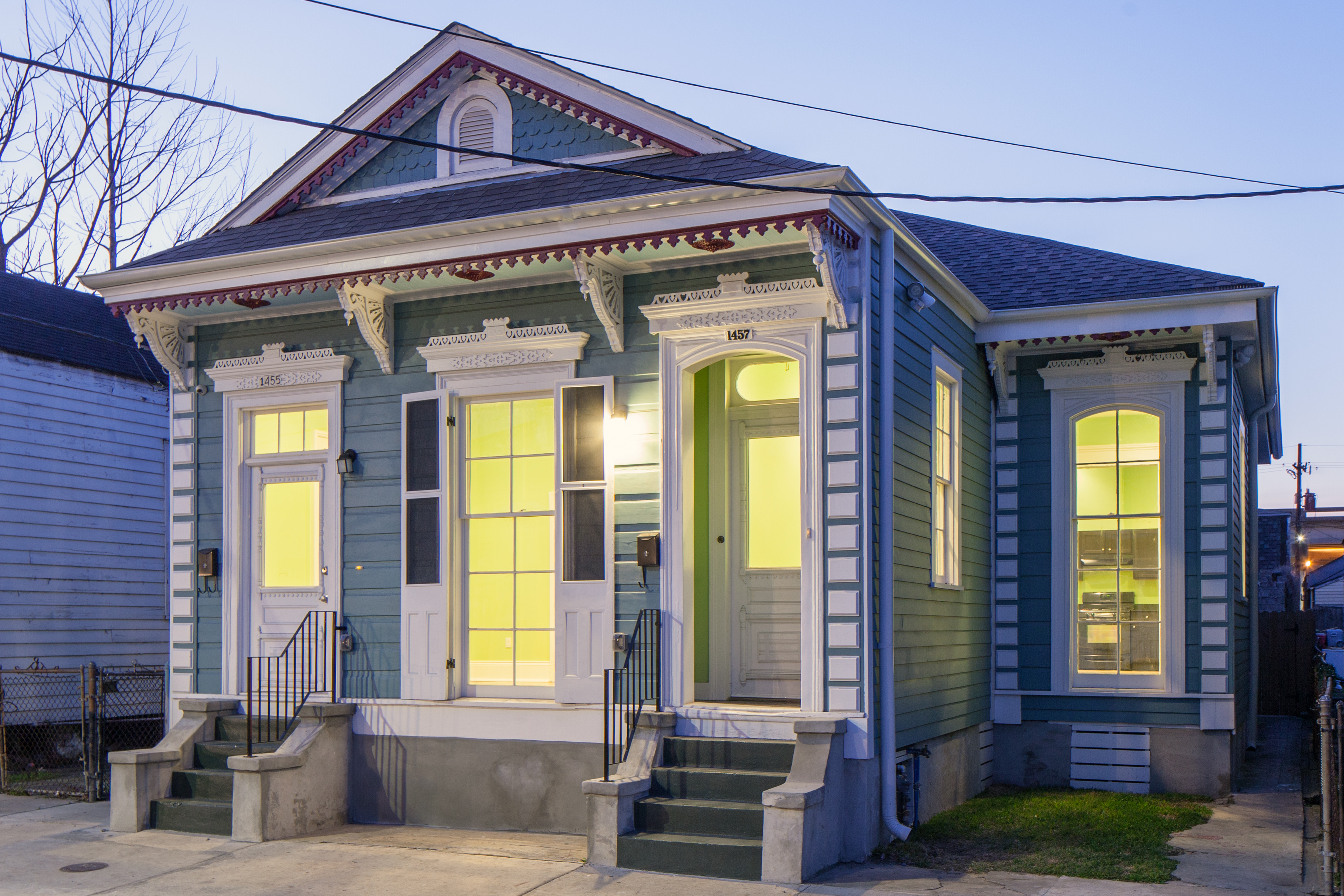 Iberville Offsite Rehabs
Iberville Offsite Rehabs 2017 Rudy Bruner Award for Urban Excellence - Silver Medal
Iberville Offsite Rehabs I & II is the historic rehabilitation of 46 homes in New Orleans, Louisiana into affordable housing for homeless women and children. Located within the 7th Ward and Treme, the formerly vacant and blighted one- and two-family structures were sensitively rehabilitated to provide affordable housing for primarily very low-income families displaced by Hurricane Katrina.
The renovations preserved each building’s unique architectural character while providing modern amenities and energy saving features such as solar water heating and photovoltaics. The homes are part of a larger Choice Neighborhoods Redevelopment Plan, a program by the U.S Department of Housing and Urban Development.
Completed in 2014, the project is a public private partnership between the Housing Authority of New Orleans, New Orleans Women’s and Children’s Shelter, and Redmellon Restoration and Development. Financing for the $12.1 million scattered site development was provided in part by affordable housing and historic preservation subsidies and low-income housing tax credits.
-
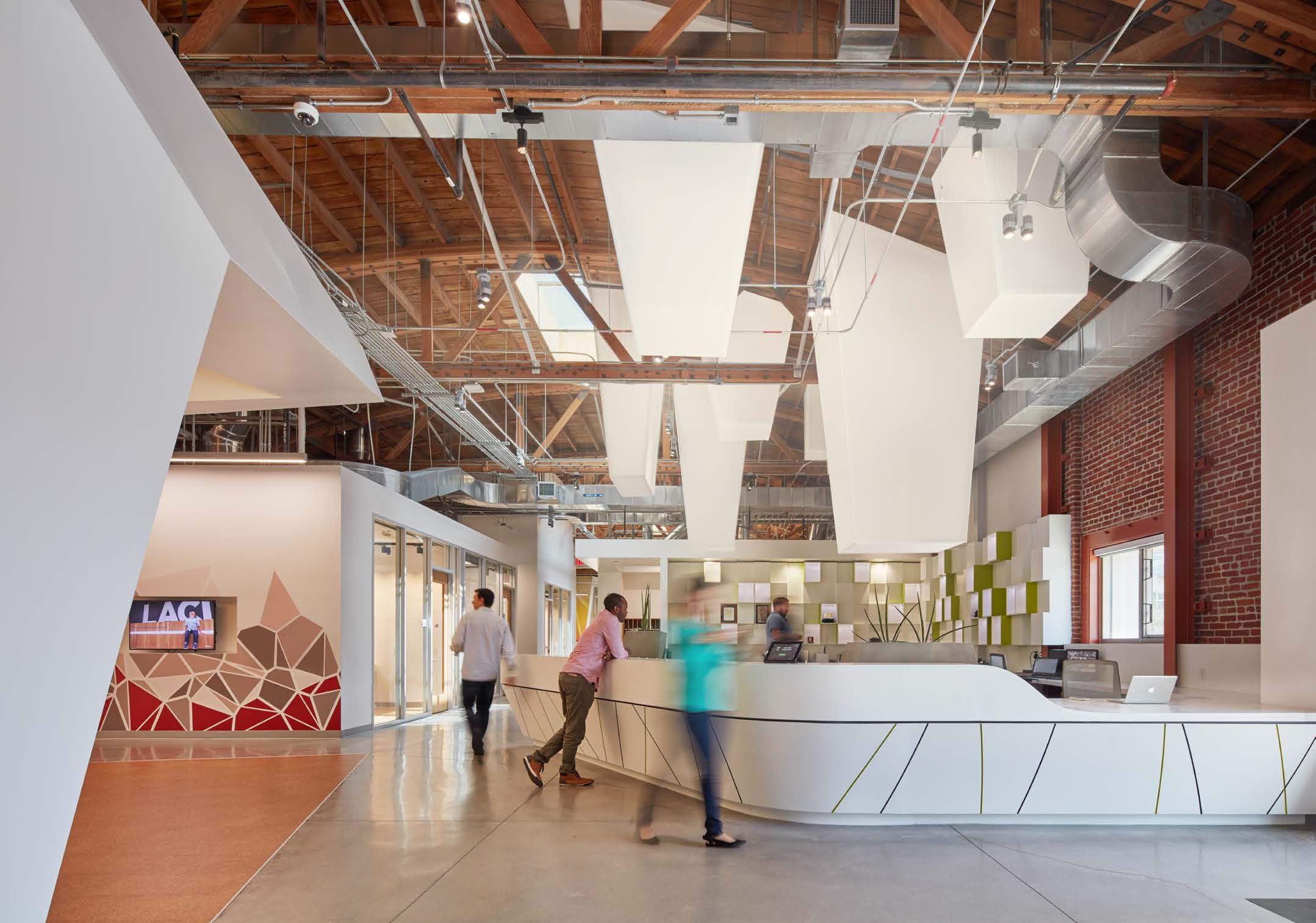 La Kretz Innovation Campus and Arts District Park
La Kretz Innovation Campus and Arts District Park 2017 Rudy Bruner Award for Urban Excellence - Silver Medal
La Kretz Innovation Campus + Arts District Park in Los Angeles, California aims to create a dialogue among clean technology innovators, residents, and visitors. La Kretz Innovation Campus’s 61,000-square-foot renovated warehouse in the Downtown Los Angeles’ Arts District is designed to serve as a “hub” for engineers, entrepreneurs, scientists, and policymakers.
Flexible open and closed workspaces and an inner loop connecting the warehouse’s eight bays foster interaction, and the building features faceted walls and skylights for abundant natural light. Arts District Park – the first public park in the neighborhood – likewise offers a variety of multi-functional spaces to create an “outdoor living room” for the campus and neighborhood. The park creates a “green oasis” while meeting high sustainability standards, including 100% storm water capture and gray water irrigation, and it balances its small size with small-scale habitable spaces along the edges that make the park look and feel more expansive. Completed in 2016, funding for the $49.2 million project was provided by public and private sources and including New Market Tax Credits.
-
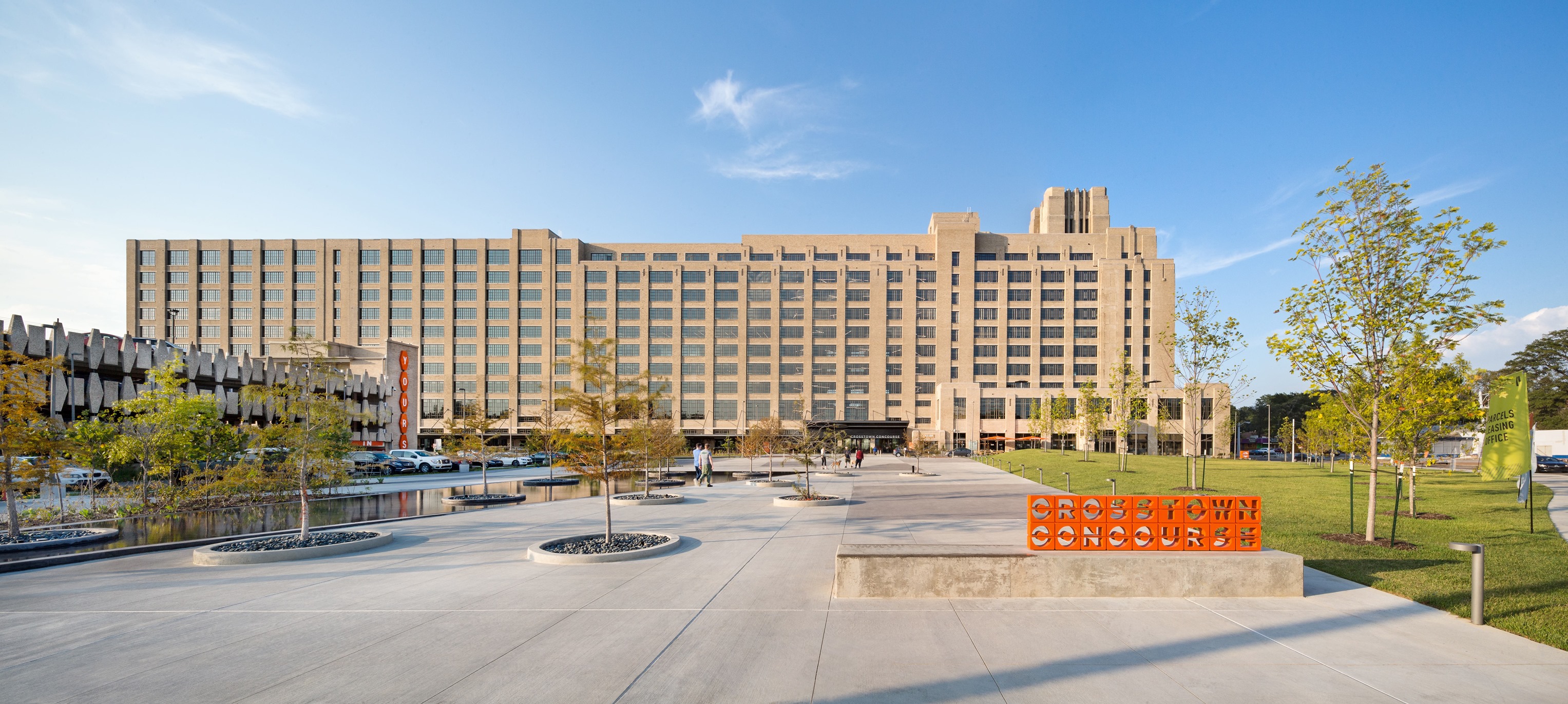 Crosstown Concourse
Crosstown Concourse 2019 Rudy Bruner Award for Urban Excellence - Gold Medal
This Sears, Roebuck & Co distribution center was built in 1927 but, after closing in 1994, the building became a symbol of blight for the city. The nonprofit Crosstown Arts rehabbed the structure, which now includes eateries, bars, stores, residences, art galleries, medical offices, and other diverse programming.
Crosstown Concourse is attempting to live out the notion of “better together” and become an inclusive microcosm of the city where a diverse range of people, ethnically, economically, professionally, and generationally, interact in meaningful and inspiring ways that improve the quality of life for everyone.
-
 Buffalo Bayou Park
Buffalo Bayou Park 2019 Rudy Bruner Award for Urban Excellence - Silver Medal
Buffalo Bayou Park in Houston, Texas is a 160-acre park and a critical urban green space located in one of Houston’s primary drainage ways, Buffalo Bayou, Houston’s major and most historic waterway.
Submitted for consideration to the RBA by its master planner SWA Group, this 2.3-mile-long urban park turned the under-used land underneath highway overpasses into a lush, diversely-programmed public space.
Using Buffalo Bayou Partnership’s 2002 Buffalo Bayou and Beyond Master Plan, created by Thompson Design Group, as a guide, Buffalo Bayou Park project has restored the area to a more natural and self-sustaining state, reintroduced native landscapes, and added amenities to enhance safety and convenience for visitors.
-
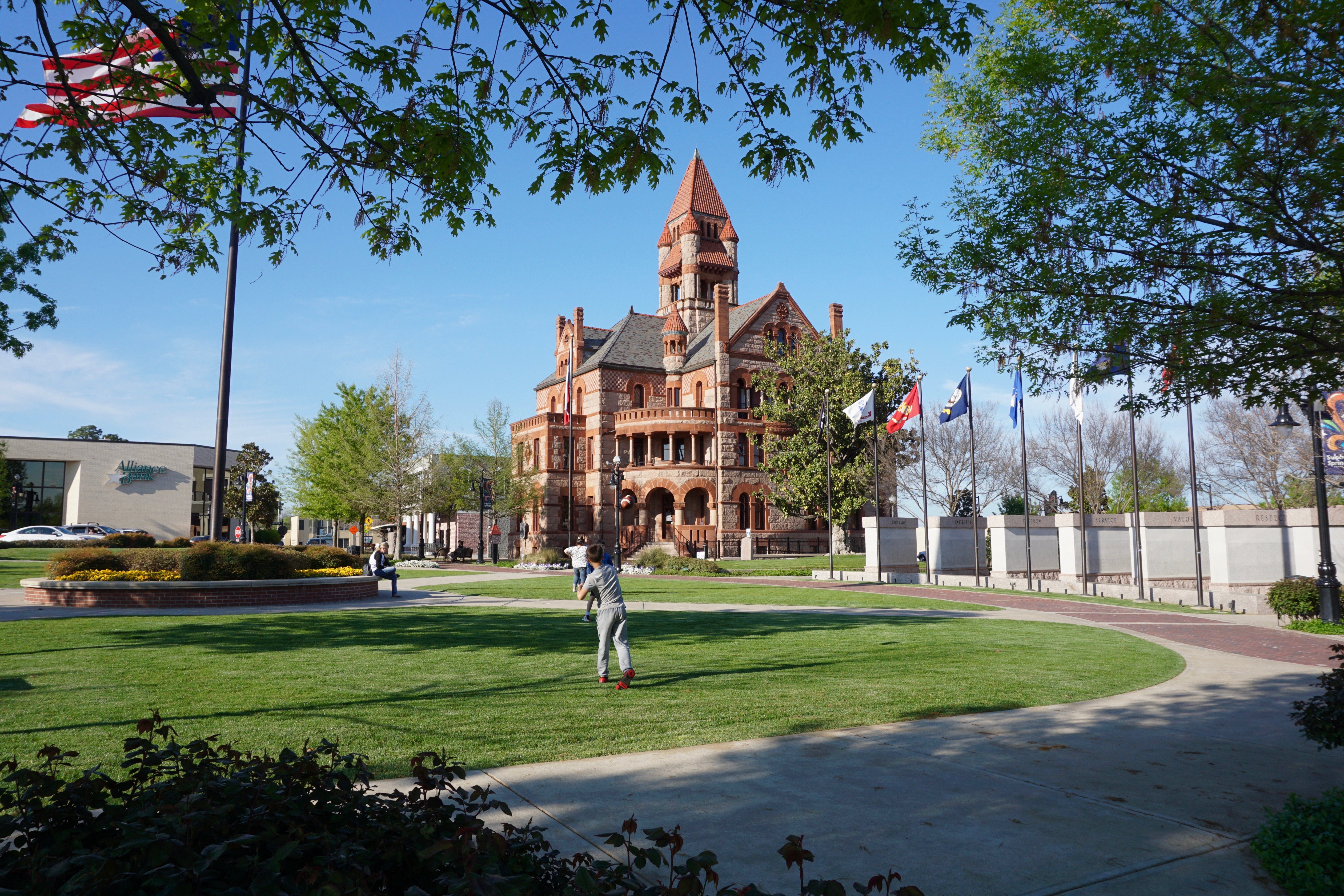 Sulphur Springs Downtown
Sulphur Springs Downtown 2019 Rudy Bruner Award for Urban Excellence - Silver Medal
With a population of around 16,000, the rural town of Sulphur Springs set out to revitalize its town square, converting it from a parking lot to a public park that would host events and gatherings. Ian Lockwood, a livable transportation engineer now affiliated with Toole Design Group, who submitted the project to RBA, led the planning process for the towns’ numerous urban design and landscaping improvements.
Sulphur Springs has inspired other rural towns and cities in Texas. The other cities are developing their own revitalization plans, emphasizing their own unique histories and contexts while borrowing the tried and true urban design and planning principles that helped Sulphur Springs. Sulphur Springs has become a role model for other places and teaching lab for designers.
-
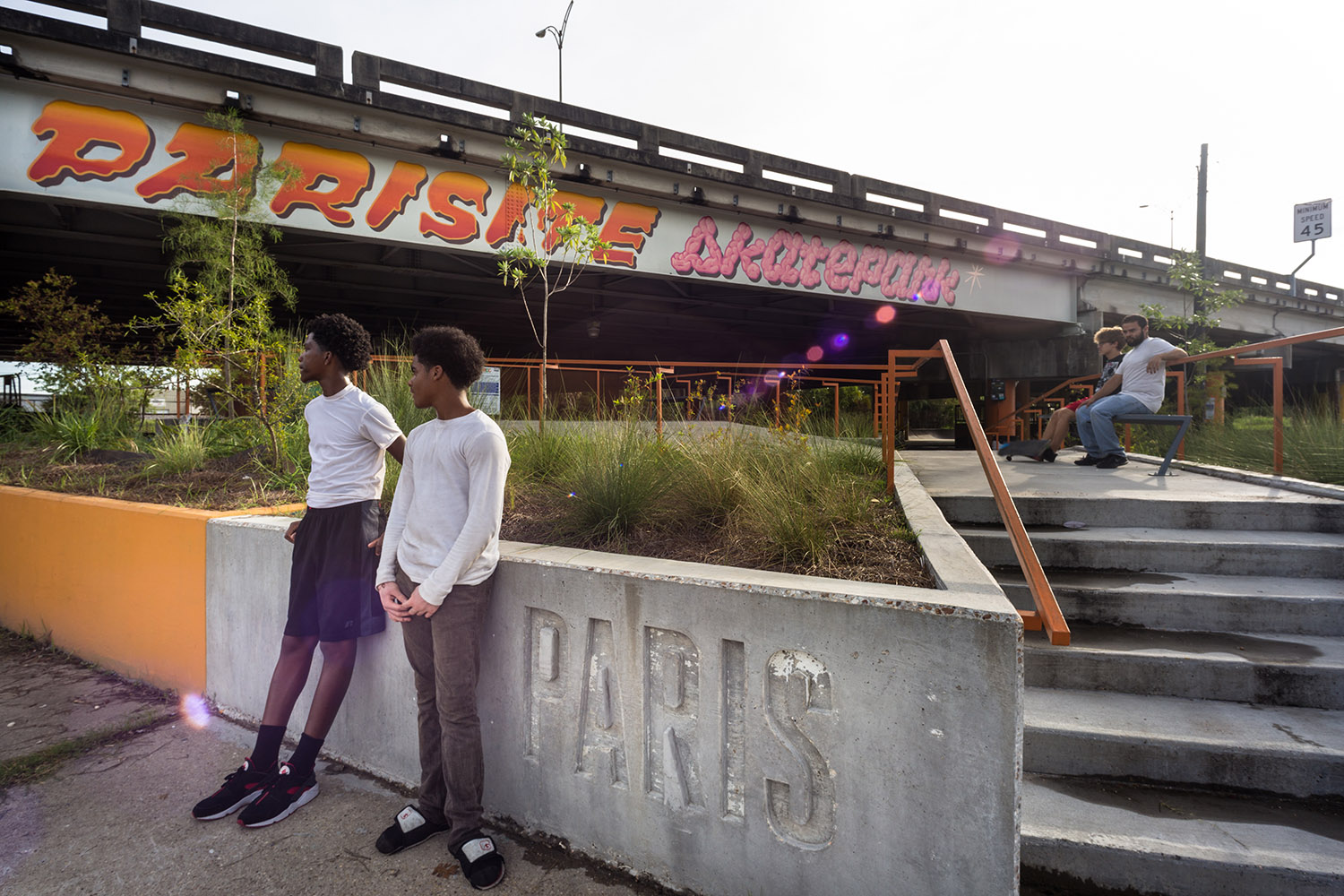 Parisite Skatepark
Parisite Skatepark 2019 Rudy Bruner Award for Urban Excellence - Silver Medal
Initially a DIY skatepark begun in 2010, Parisite became a collaboration between its skaters, Tulane School of Architecture’s Albert and Tina Small Center for Collaborative Design, and the nonprofit Transitional Spaces. Working together, the team grew the park and earned it official city recognition.
Parisite Skatepark remains the one and only official public skatepark in New Orleans, offering easily accessible, safe and free recreation to the city’s population and a model for transforming derelict urban voids into functional community spaces.
-
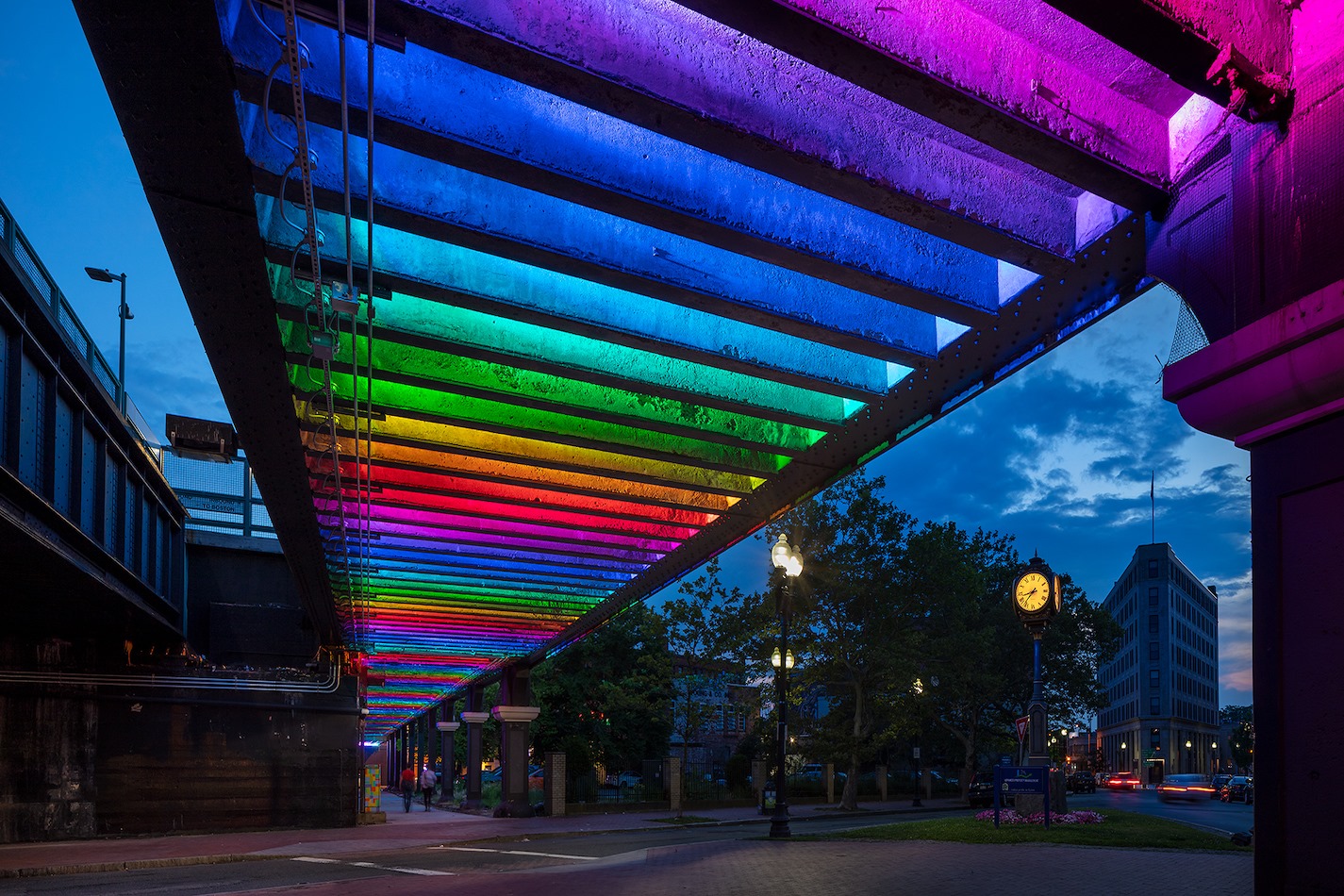 Beyond Walls
Beyond Walls 2019 Rudy Bruner Award for Urban Excellence - Silver Medal
Beyond Walls is centrally located in the urban downtown of Lynn, Massachusetts. This creative placemaking-focused nonprofit collaborates with local government, community groups, and stakeholders to deploy public art and other experiences in marginal or little-used spaces. Its projects have included a murals festival—which attracted international artists—and the restoration of vintage neon signs.
Beyond Walls has used grassroots efforts to promote stronger, more vibrant, and more inclusive communities. Through their projects and programming, they have retained the voice, integrity, and pride of area residents.
 Grand Rapids Downtown Market 2015 Rudy Bruner Award for Urban Excellence - Silver Medal Michigan’s Grand Rapids Downtown Market is a year-round farmers market that brings local food production, distribution, marketing, and education to the community. The first LEED Gold certified public market in the country, the market features 24 indoor vendors and a seasonal 52-stall outdoor shed featuring locally grown, produced, and prepared foods. Upper floors house educational classrooms, a commercial kitchen incubator, a rooftop greenhouse, offices and meeting rooms, and event spaces. The ground floor also includes two full-service restaurants. The market is located just south of the downtown business district in Heartside, one of the area’s most economically challenged neighborhoods. Vendors accept Supplemental Nutrition Assistance Program (SNAP) food stamps, and the market partners with local nonprofits to provide educational scholarships to low-income residents along with complimentary transit passes and “Produce Bucks” that can be used at the market’s grocery store. The Heartside Gleaning Initiative collects excess fresh produce from market vendors for distribution to local food pantries. The Downtown Market celebrates the local food system by linking the Grand Rapids community with many of the 12,220 farms in 11 surrounding counties and attracts a diversity of customers and additional investment to the southern edge of downtown. Educational programming is at the core of the market’s mission, and classes on cooking and nutrition are offered in the teaching kitchen, which features adjustable-height countertops that can be lowered for children. An incubator kitchen program assists start-up entrepreneurs with the development, production, and marketing of food products using a shared commercial kitchen.
Grand Rapids Downtown Market 2015 Rudy Bruner Award for Urban Excellence - Silver Medal Michigan’s Grand Rapids Downtown Market is a year-round farmers market that brings local food production, distribution, marketing, and education to the community. The first LEED Gold certified public market in the country, the market features 24 indoor vendors and a seasonal 52-stall outdoor shed featuring locally grown, produced, and prepared foods. Upper floors house educational classrooms, a commercial kitchen incubator, a rooftop greenhouse, offices and meeting rooms, and event spaces. The ground floor also includes two full-service restaurants. The market is located just south of the downtown business district in Heartside, one of the area’s most economically challenged neighborhoods. Vendors accept Supplemental Nutrition Assistance Program (SNAP) food stamps, and the market partners with local nonprofits to provide educational scholarships to low-income residents along with complimentary transit passes and “Produce Bucks” that can be used at the market’s grocery store. The Heartside Gleaning Initiative collects excess fresh produce from market vendors for distribution to local food pantries. The Downtown Market celebrates the local food system by linking the Grand Rapids community with many of the 12,220 farms in 11 surrounding counties and attracts a diversity of customers and additional investment to the southern edge of downtown. Educational programming is at the core of the market’s mission, and classes on cooking and nutrition are offered in the teaching kitchen, which features adjustable-height countertops that can be lowered for children. An incubator kitchen program assists start-up entrepreneurs with the development, production, and marketing of food products using a shared commercial kitchen. Quixote Village 2015 Rudy Bruner Award for Urban Excellence - Silver Medal Quixote Village in Olympia, Washington, is a low-cost, sustainable community composed of 30 tiny houses occupied by formerly homeless residents. Set on two acres of land donated by the county, the cottages face a central open space and retention ponds, and a 2,640-square-foot community building houses a communal kitchen and gathering room, showers and laundry facilities, staff offices, and a meeting room. Each 144-square-foot house provides just enough room for a single bed, a desk and chair, a half bath, and a closet. Front porches encourage interaction and contribute to the sense of community. The village emerged from a self-governing tent community that formed in 2007 as a protested against an anti-homeless city ordinance. After the City of Olympia threatened to remove the camp, a local church offered to host the community on its grounds. Over the next seven years, Camp Quixote, as the tent community was called, moved from site to site among local churches with the help of Panza, a nonprofit formed to support Camp Quixote and, eventually, help develop a permanent home for its residents. The “tiny house” idea emerged from a series of workshops with camp residents and Panza members. Although Panza serves as the legal owner and landlord, residents of Quixote Village have responsibilities and continue to play a significant role in governing the community. A full-time program and facilities manager and a resident advocate provide support for the community including property management, local transportation, and programmed activities, as well as individualized counseling that connects residents with education and employment opportunities, local mental and physical health services, and state and federal government aid.
Quixote Village 2015 Rudy Bruner Award for Urban Excellence - Silver Medal Quixote Village in Olympia, Washington, is a low-cost, sustainable community composed of 30 tiny houses occupied by formerly homeless residents. Set on two acres of land donated by the county, the cottages face a central open space and retention ponds, and a 2,640-square-foot community building houses a communal kitchen and gathering room, showers and laundry facilities, staff offices, and a meeting room. Each 144-square-foot house provides just enough room for a single bed, a desk and chair, a half bath, and a closet. Front porches encourage interaction and contribute to the sense of community. The village emerged from a self-governing tent community that formed in 2007 as a protested against an anti-homeless city ordinance. After the City of Olympia threatened to remove the camp, a local church offered to host the community on its grounds. Over the next seven years, Camp Quixote, as the tent community was called, moved from site to site among local churches with the help of Panza, a nonprofit formed to support Camp Quixote and, eventually, help develop a permanent home for its residents. The “tiny house” idea emerged from a series of workshops with camp residents and Panza members. Although Panza serves as the legal owner and landlord, residents of Quixote Village have responsibilities and continue to play a significant role in governing the community. A full-time program and facilities manager and a resident advocate provide support for the community including property management, local transportation, and programmed activities, as well as individualized counseling that connects residents with education and employment opportunities, local mental and physical health services, and state and federal government aid. Uptown District 2015 Rudy Bruner Award for Urban Excellence - Silver Medal Uptown District in Cleveland revitalized 8.2 acres of formerly vacant land into a mixed-use space and gateway to cultural, educational, and healthcare institutions. It is a sustainable, transit-oriented development located at a convergence of neighborhoods four miles east of downtown and a truly collaborative effort that has transformed two blocks of Euclid Avenue. Costing more than $200 million and consisting of over 223,500 square feet of new development, the district turned a “no-man’s-land” into a destination. Uptown District is bookended by the Museum of Contemporary Art, housed in a new and iconic building, and the Cleveland Institute of Art, which consolidated and expanded its campus. In between, the “Wall” forms the heart of the district and features outdoor gathering spaces, retail shops and restaurants, and student and market-rate housing. Envisioned as an arts and entertainment district, Uptown District was designed to create “connective tissue” linking Cleveland’s educational and cultural district with downtown and adjoining communities. Mid-block passageways and an internal “alley” provide visual and pedestrian connections between Euclid Avenue and adjoining buildings, plazas, and parking. The downtown and neighborhood linkage was improved through new rail stations both south of and within Uptown as well as by the popular HealthLine bus system that connects Uptown District with downtown and East Cleveland. Uptown District is a continuing focus of the Cleveland Foundation’s Greater University Circle Initiative, a public-private partnership between leading anchor institutions, philanthropic organizations, financial institutions, community groups, and the City of Cleveland. The development highlights the role of anchor institutions—including Case Western University, whose land banking strategy laid the foundation for the project—in catalyzing and leading community change.
Uptown District 2015 Rudy Bruner Award for Urban Excellence - Silver Medal Uptown District in Cleveland revitalized 8.2 acres of formerly vacant land into a mixed-use space and gateway to cultural, educational, and healthcare institutions. It is a sustainable, transit-oriented development located at a convergence of neighborhoods four miles east of downtown and a truly collaborative effort that has transformed two blocks of Euclid Avenue. Costing more than $200 million and consisting of over 223,500 square feet of new development, the district turned a “no-man’s-land” into a destination. Uptown District is bookended by the Museum of Contemporary Art, housed in a new and iconic building, and the Cleveland Institute of Art, which consolidated and expanded its campus. In between, the “Wall” forms the heart of the district and features outdoor gathering spaces, retail shops and restaurants, and student and market-rate housing. Envisioned as an arts and entertainment district, Uptown District was designed to create “connective tissue” linking Cleveland’s educational and cultural district with downtown and adjoining communities. Mid-block passageways and an internal “alley” provide visual and pedestrian connections between Euclid Avenue and adjoining buildings, plazas, and parking. The downtown and neighborhood linkage was improved through new rail stations both south of and within Uptown as well as by the popular HealthLine bus system that connects Uptown District with downtown and East Cleveland. Uptown District is a continuing focus of the Cleveland Foundation’s Greater University Circle Initiative, a public-private partnership between leading anchor institutions, philanthropic organizations, financial institutions, community groups, and the City of Cleveland. The development highlights the role of anchor institutions—including Case Western University, whose land banking strategy laid the foundation for the project—in catalyzing and leading community change. SteelStacks Arts and Cultural Campus 2017 Rudy Bruner Award for Urban Excellence - Gold Medal Transformation of a former steel plant into a mixed-use cultural and entertainment district. SteelStacks Arts and Cultural Campus repurposed an abandoned industrial site in Bethlehem, Pennsylvania, to create an arts and entertainment district. Embracing the city’s past, SteelStacks integrates historic steel-making structures – including five 20-story-high blast furnaces – with new construction to tell the story of steel-making in America while stimulating an economy devastated by the closure of the 1,800-acre Bethlehem Steel Corporation in 1995. Built on a 9.5-acre former brownfield, SteelStacks includes parks and plazas, an outdoor performing arts pavilion, a visitor center with a theater and community space in the restored historic Stock House building, new buildings for its nonprofit partners ArtsQuest and PBS39, a festival center, and an elevated trestle that gives the 1.5 million visitors each year an up-close look at the plant and its iconic blast furnaces. Its design focuses on connection, linking visitors to the city’s past, connecting the various activities and amenities within the campus, and merging the campus with the South Side neighborhood and the adjacent Sands Casino Resort.
SteelStacks Arts and Cultural Campus 2017 Rudy Bruner Award for Urban Excellence - Gold Medal Transformation of a former steel plant into a mixed-use cultural and entertainment district. SteelStacks Arts and Cultural Campus repurposed an abandoned industrial site in Bethlehem, Pennsylvania, to create an arts and entertainment district. Embracing the city’s past, SteelStacks integrates historic steel-making structures – including five 20-story-high blast furnaces – with new construction to tell the story of steel-making in America while stimulating an economy devastated by the closure of the 1,800-acre Bethlehem Steel Corporation in 1995. Built on a 9.5-acre former brownfield, SteelStacks includes parks and plazas, an outdoor performing arts pavilion, a visitor center with a theater and community space in the restored historic Stock House building, new buildings for its nonprofit partners ArtsQuest and PBS39, a festival center, and an elevated trestle that gives the 1.5 million visitors each year an up-close look at the plant and its iconic blast furnaces. Its design focuses on connection, linking visitors to the city’s past, connecting the various activities and amenities within the campus, and merging the campus with the South Side neighborhood and the adjacent Sands Casino Resort. Bruce C. Bolling Municipal Building 2017 Rudy Bruner Award for Urban Excellence - Silver Medal The Bruce C. Bolling Municipal Building in Boston, Massachusetts is a mixed-use facility integrating public school offices, retail, transit, and the community. Centrally located in Roxbury’s Dudley Square adjacent to a regional transit hub, it was created by the city of Boston to stimulate community development and investment. The 215,000 square foot complex incorporates the restoration of three historic facades, including the landmark Ferdinand building, coupled with new construction and capped with a green roof. The interior includes a light filled-atrium, offices, community meeting space, and first floor retail. The anchor tenant is the newly consolidated Boston Public Schools headquarters. Ground floor restaurants and shops serve building tenants and the surrounding neighborhood. Funding for the $124 million public private development included New Market Tax Credit financing.
Bruce C. Bolling Municipal Building 2017 Rudy Bruner Award for Urban Excellence - Silver Medal The Bruce C. Bolling Municipal Building in Boston, Massachusetts is a mixed-use facility integrating public school offices, retail, transit, and the community. Centrally located in Roxbury’s Dudley Square adjacent to a regional transit hub, it was created by the city of Boston to stimulate community development and investment. The 215,000 square foot complex incorporates the restoration of three historic facades, including the landmark Ferdinand building, coupled with new construction and capped with a green roof. The interior includes a light filled-atrium, offices, community meeting space, and first floor retail. The anchor tenant is the newly consolidated Boston Public Schools headquarters. Ground floor restaurants and shops serve building tenants and the surrounding neighborhood. Funding for the $124 million public private development included New Market Tax Credit financing. Chicago Riverwalk 2017 Rudy Bruner Award for Urban Excellence - Silver Medal Phases 2 & 3 of Chicago’s Riverwalk transformed underutilized waterfront infrastructure into five distinct “rooms” connecting riverside amenities to the city. The project faced the technical challenge of lowering the Riverwalk to the river’s edge to enable boating and water recreation while creating a sustainable, flood-resilient landscape. While design elements and materials provide a strong sense of continuity along the path, each of the five waterfront blocks offers a unique shape and programmatic approach to exploring the relationship between the river and the city. New waterfront amenities include art installations and events, educational programs and interpretive signage, restaurants and outdoor seating, kayak rentals, and piers and floating wetland gardens for interactive learning about the river’s ecology. The $95 million project covers 3.5 acres and was completed in October 2016.
Chicago Riverwalk 2017 Rudy Bruner Award for Urban Excellence - Silver Medal Phases 2 & 3 of Chicago’s Riverwalk transformed underutilized waterfront infrastructure into five distinct “rooms” connecting riverside amenities to the city. The project faced the technical challenge of lowering the Riverwalk to the river’s edge to enable boating and water recreation while creating a sustainable, flood-resilient landscape. While design elements and materials provide a strong sense of continuity along the path, each of the five waterfront blocks offers a unique shape and programmatic approach to exploring the relationship between the river and the city. New waterfront amenities include art installations and events, educational programs and interpretive signage, restaurants and outdoor seating, kayak rentals, and piers and floating wetland gardens for interactive learning about the river’s ecology. The $95 million project covers 3.5 acres and was completed in October 2016. Iberville Offsite Rehabs 2017 Rudy Bruner Award for Urban Excellence - Silver Medal Iberville Offsite Rehabs I & II is the historic rehabilitation of 46 homes in New Orleans, Louisiana into affordable housing for homeless women and children. Located within the 7th Ward and Treme, the formerly vacant and blighted one- and two-family structures were sensitively rehabilitated to provide affordable housing for primarily very low-income families displaced by Hurricane Katrina. The renovations preserved each building’s unique architectural character while providing modern amenities and energy saving features such as solar water heating and photovoltaics. The homes are part of a larger Choice Neighborhoods Redevelopment Plan, a program by the U.S Department of Housing and Urban Development. Completed in 2014, the project is a public private partnership between the Housing Authority of New Orleans, New Orleans Women’s and Children’s Shelter, and Redmellon Restoration and Development. Financing for the $12.1 million scattered site development was provided in part by affordable housing and historic preservation subsidies and low-income housing tax credits.
Iberville Offsite Rehabs 2017 Rudy Bruner Award for Urban Excellence - Silver Medal Iberville Offsite Rehabs I & II is the historic rehabilitation of 46 homes in New Orleans, Louisiana into affordable housing for homeless women and children. Located within the 7th Ward and Treme, the formerly vacant and blighted one- and two-family structures were sensitively rehabilitated to provide affordable housing for primarily very low-income families displaced by Hurricane Katrina. The renovations preserved each building’s unique architectural character while providing modern amenities and energy saving features such as solar water heating and photovoltaics. The homes are part of a larger Choice Neighborhoods Redevelopment Plan, a program by the U.S Department of Housing and Urban Development. Completed in 2014, the project is a public private partnership between the Housing Authority of New Orleans, New Orleans Women’s and Children’s Shelter, and Redmellon Restoration and Development. Financing for the $12.1 million scattered site development was provided in part by affordable housing and historic preservation subsidies and low-income housing tax credits. La Kretz Innovation Campus and Arts District Park 2017 Rudy Bruner Award for Urban Excellence - Silver Medal La Kretz Innovation Campus + Arts District Park in Los Angeles, California aims to create a dialogue among clean technology innovators, residents, and visitors. La Kretz Innovation Campus’s 61,000-square-foot renovated warehouse in the Downtown Los Angeles’ Arts District is designed to serve as a “hub” for engineers, entrepreneurs, scientists, and policymakers. Flexible open and closed workspaces and an inner loop connecting the warehouse’s eight bays foster interaction, and the building features faceted walls and skylights for abundant natural light. Arts District Park – the first public park in the neighborhood – likewise offers a variety of multi-functional spaces to create an “outdoor living room” for the campus and neighborhood. The park creates a “green oasis” while meeting high sustainability standards, including 100% storm water capture and gray water irrigation, and it balances its small size with small-scale habitable spaces along the edges that make the park look and feel more expansive. Completed in 2016, funding for the $49.2 million project was provided by public and private sources and including New Market Tax Credits.
La Kretz Innovation Campus and Arts District Park 2017 Rudy Bruner Award for Urban Excellence - Silver Medal La Kretz Innovation Campus + Arts District Park in Los Angeles, California aims to create a dialogue among clean technology innovators, residents, and visitors. La Kretz Innovation Campus’s 61,000-square-foot renovated warehouse in the Downtown Los Angeles’ Arts District is designed to serve as a “hub” for engineers, entrepreneurs, scientists, and policymakers. Flexible open and closed workspaces and an inner loop connecting the warehouse’s eight bays foster interaction, and the building features faceted walls and skylights for abundant natural light. Arts District Park – the first public park in the neighborhood – likewise offers a variety of multi-functional spaces to create an “outdoor living room” for the campus and neighborhood. The park creates a “green oasis” while meeting high sustainability standards, including 100% storm water capture and gray water irrigation, and it balances its small size with small-scale habitable spaces along the edges that make the park look and feel more expansive. Completed in 2016, funding for the $49.2 million project was provided by public and private sources and including New Market Tax Credits. Crosstown Concourse 2019 Rudy Bruner Award for Urban Excellence - Gold Medal This Sears, Roebuck & Co distribution center was built in 1927 but, after closing in 1994, the building became a symbol of blight for the city. The nonprofit Crosstown Arts rehabbed the structure, which now includes eateries, bars, stores, residences, art galleries, medical offices, and other diverse programming. Crosstown Concourse is attempting to live out the notion of “better together” and become an inclusive microcosm of the city where a diverse range of people, ethnically, economically, professionally, and generationally, interact in meaningful and inspiring ways that improve the quality of life for everyone.
Crosstown Concourse 2019 Rudy Bruner Award for Urban Excellence - Gold Medal This Sears, Roebuck & Co distribution center was built in 1927 but, after closing in 1994, the building became a symbol of blight for the city. The nonprofit Crosstown Arts rehabbed the structure, which now includes eateries, bars, stores, residences, art galleries, medical offices, and other diverse programming. Crosstown Concourse is attempting to live out the notion of “better together” and become an inclusive microcosm of the city where a diverse range of people, ethnically, economically, professionally, and generationally, interact in meaningful and inspiring ways that improve the quality of life for everyone. Buffalo Bayou Park 2019 Rudy Bruner Award for Urban Excellence - Silver Medal Buffalo Bayou Park in Houston, Texas is a 160-acre park and a critical urban green space located in one of Houston’s primary drainage ways, Buffalo Bayou, Houston’s major and most historic waterway. Submitted for consideration to the RBA by its master planner SWA Group, this 2.3-mile-long urban park turned the under-used land underneath highway overpasses into a lush, diversely-programmed public space. Using Buffalo Bayou Partnership’s 2002 Buffalo Bayou and Beyond Master Plan, created by Thompson Design Group, as a guide, Buffalo Bayou Park project has restored the area to a more natural and self-sustaining state, reintroduced native landscapes, and added amenities to enhance safety and convenience for visitors.
Buffalo Bayou Park 2019 Rudy Bruner Award for Urban Excellence - Silver Medal Buffalo Bayou Park in Houston, Texas is a 160-acre park and a critical urban green space located in one of Houston’s primary drainage ways, Buffalo Bayou, Houston’s major and most historic waterway. Submitted for consideration to the RBA by its master planner SWA Group, this 2.3-mile-long urban park turned the under-used land underneath highway overpasses into a lush, diversely-programmed public space. Using Buffalo Bayou Partnership’s 2002 Buffalo Bayou and Beyond Master Plan, created by Thompson Design Group, as a guide, Buffalo Bayou Park project has restored the area to a more natural and self-sustaining state, reintroduced native landscapes, and added amenities to enhance safety and convenience for visitors. Sulphur Springs Downtown 2019 Rudy Bruner Award for Urban Excellence - Silver Medal With a population of around 16,000, the rural town of Sulphur Springs set out to revitalize its town square, converting it from a parking lot to a public park that would host events and gatherings. Ian Lockwood, a livable transportation engineer now affiliated with Toole Design Group, who submitted the project to RBA, led the planning process for the towns’ numerous urban design and landscaping improvements. Sulphur Springs has inspired other rural towns and cities in Texas. The other cities are developing their own revitalization plans, emphasizing their own unique histories and contexts while borrowing the tried and true urban design and planning principles that helped Sulphur Springs. Sulphur Springs has become a role model for other places and teaching lab for designers.
Sulphur Springs Downtown 2019 Rudy Bruner Award for Urban Excellence - Silver Medal With a population of around 16,000, the rural town of Sulphur Springs set out to revitalize its town square, converting it from a parking lot to a public park that would host events and gatherings. Ian Lockwood, a livable transportation engineer now affiliated with Toole Design Group, who submitted the project to RBA, led the planning process for the towns’ numerous urban design and landscaping improvements. Sulphur Springs has inspired other rural towns and cities in Texas. The other cities are developing their own revitalization plans, emphasizing their own unique histories and contexts while borrowing the tried and true urban design and planning principles that helped Sulphur Springs. Sulphur Springs has become a role model for other places and teaching lab for designers. Parisite Skatepark 2019 Rudy Bruner Award for Urban Excellence - Silver Medal Initially a DIY skatepark begun in 2010, Parisite became a collaboration between its skaters, Tulane School of Architecture’s Albert and Tina Small Center for Collaborative Design, and the nonprofit Transitional Spaces. Working together, the team grew the park and earned it official city recognition. Parisite Skatepark remains the one and only official public skatepark in New Orleans, offering easily accessible, safe and free recreation to the city’s population and a model for transforming derelict urban voids into functional community spaces.
Parisite Skatepark 2019 Rudy Bruner Award for Urban Excellence - Silver Medal Initially a DIY skatepark begun in 2010, Parisite became a collaboration between its skaters, Tulane School of Architecture’s Albert and Tina Small Center for Collaborative Design, and the nonprofit Transitional Spaces. Working together, the team grew the park and earned it official city recognition. Parisite Skatepark remains the one and only official public skatepark in New Orleans, offering easily accessible, safe and free recreation to the city’s population and a model for transforming derelict urban voids into functional community spaces. Beyond Walls 2019 Rudy Bruner Award for Urban Excellence - Silver Medal Beyond Walls is centrally located in the urban downtown of Lynn, Massachusetts. This creative placemaking-focused nonprofit collaborates with local government, community groups, and stakeholders to deploy public art and other experiences in marginal or little-used spaces. Its projects have included a murals festival—which attracted international artists—and the restoration of vintage neon signs. Beyond Walls has used grassroots efforts to promote stronger, more vibrant, and more inclusive communities. Through their projects and programming, they have retained the voice, integrity, and pride of area residents.
Beyond Walls 2019 Rudy Bruner Award for Urban Excellence - Silver Medal Beyond Walls is centrally located in the urban downtown of Lynn, Massachusetts. This creative placemaking-focused nonprofit collaborates with local government, community groups, and stakeholders to deploy public art and other experiences in marginal or little-used spaces. Its projects have included a murals festival—which attracted international artists—and the restoration of vintage neon signs. Beyond Walls has used grassroots efforts to promote stronger, more vibrant, and more inclusive communities. Through their projects and programming, they have retained the voice, integrity, and pride of area residents.